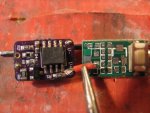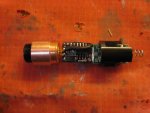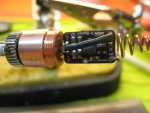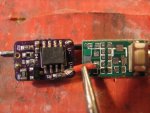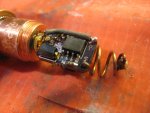- Joined
- Apr 21, 2016
- Messages
- 24
- Points
- 3
Hi there!
I'm brand new to LPF, though I've been browsing for a little while. My collection of lasers has been growing a lot, and lately I've really got an itch to put one together. I've got a number of packaged laser diodes, and most of them I've already installed in a module. A few already have G2 lenses and drivers on them (bought a few from DTR recently).
I also recently bought a couple pen hosts and switch PCB's from laser66, and I cannot for the life of me figure out how to put this together (even after lurking the boards a while). Does anyone have any input or recommendations on how I go about that?
I'm very experienced soldering and am finishing up my bachelor's in EE, so you don't need to be too vague! Any input is greatly appreciated.
Thanks very much!
I'm brand new to LPF, though I've been browsing for a little while. My collection of lasers has been growing a lot, and lately I've really got an itch to put one together. I've got a number of packaged laser diodes, and most of them I've already installed in a module. A few already have G2 lenses and drivers on them (bought a few from DTR recently).
I also recently bought a couple pen hosts and switch PCB's from laser66, and I cannot for the life of me figure out how to put this together (even after lurking the boards a while). Does anyone have any input or recommendations on how I go about that?
I'm very experienced soldering and am finishing up my bachelor's in EE, so you don't need to be too vague! Any input is greatly appreciated.
Thanks very much!




